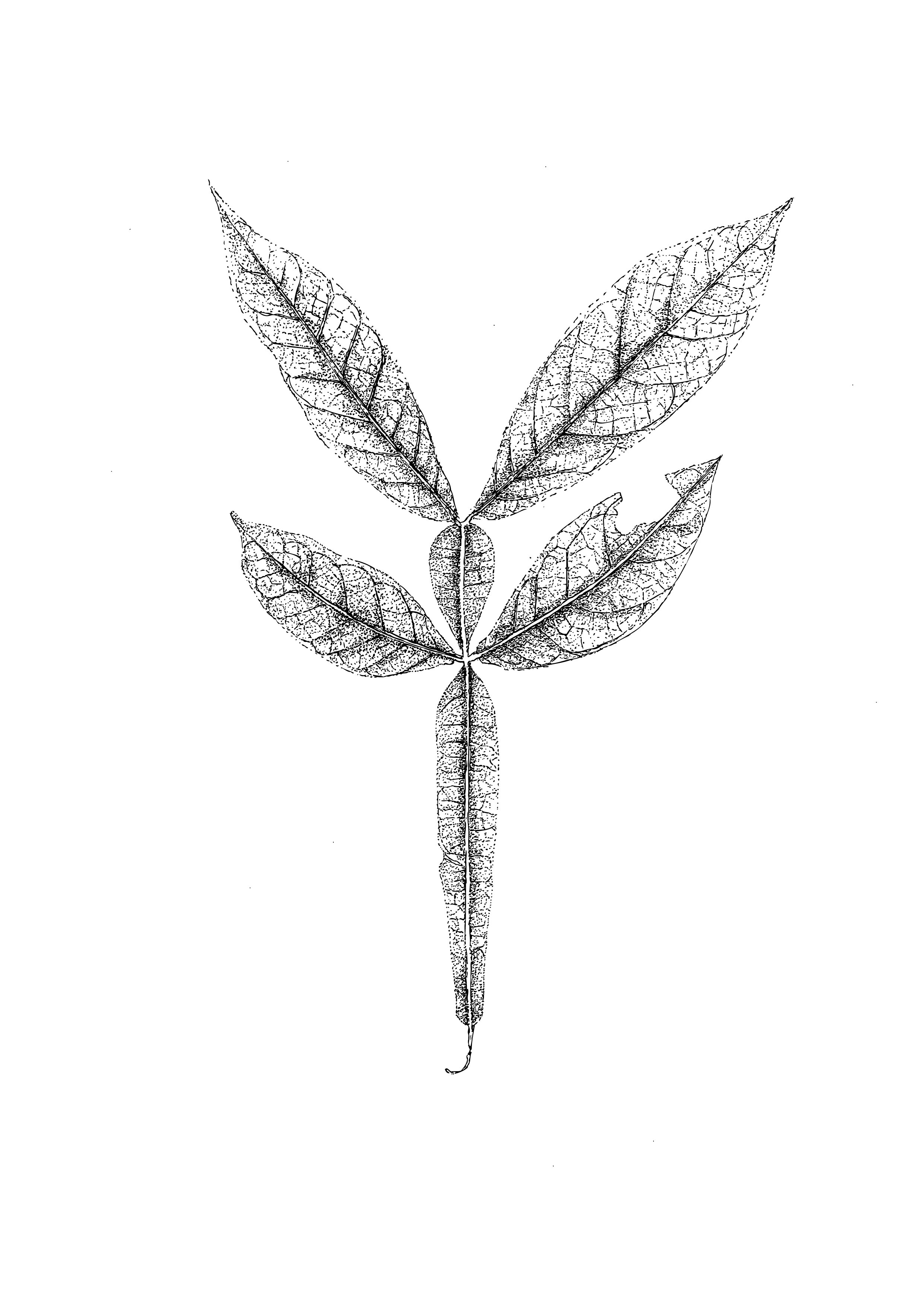 Image 1 of
Image 1 of


Inga edulis
8.27 × 11.69 inches
Scientific name: Inga edulis
Common name: Guaba, Ice-Cream bean.
Family: Fabaceae
Order: Fabales
Place of origin: Bolivia, Brazil, Colombia, Ecuador, Guyana
This fast growing tree creates a large amount of biomass with its leaf litter and fallen branches and is an excellent option for reforestation. It can adapt to different soils that have been degraded by mining, cattle ranches, areas with compacted soil and areas that have been burnt year after year. It also acts as a nitrogen fixer, enriching the soil and its deep robust rooting structure helps prevent erosion. After a year it will surpass the grasses and can be left to its own devices.
The edible fruit are twisted cylindrical pods, can reach a metre long and their seeds are covered in a sweet cottony aril.
The seeds and leaves are used medicinally as an astringent in intestinal disease and to treat rheumatoid arthritis.
8.27 × 11.69 inches
Scientific name: Inga edulis
Common name: Guaba, Ice-Cream bean.
Family: Fabaceae
Order: Fabales
Place of origin: Bolivia, Brazil, Colombia, Ecuador, Guyana
This fast growing tree creates a large amount of biomass with its leaf litter and fallen branches and is an excellent option for reforestation. It can adapt to different soils that have been degraded by mining, cattle ranches, areas with compacted soil and areas that have been burnt year after year. It also acts as a nitrogen fixer, enriching the soil and its deep robust rooting structure helps prevent erosion. After a year it will surpass the grasses and can be left to its own devices.
The edible fruit are twisted cylindrical pods, can reach a metre long and their seeds are covered in a sweet cottony aril.
The seeds and leaves are used medicinally as an astringent in intestinal disease and to treat rheumatoid arthritis.
8.27 × 11.69 inches
Scientific name: Inga edulis
Common name: Guaba, Ice-Cream bean.
Family: Fabaceae
Order: Fabales
Place of origin: Bolivia, Brazil, Colombia, Ecuador, Guyana
This fast growing tree creates a large amount of biomass with its leaf litter and fallen branches and is an excellent option for reforestation. It can adapt to different soils that have been degraded by mining, cattle ranches, areas with compacted soil and areas that have been burnt year after year. It also acts as a nitrogen fixer, enriching the soil and its deep robust rooting structure helps prevent erosion. After a year it will surpass the grasses and can be left to its own devices.
The edible fruit are twisted cylindrical pods, can reach a metre long and their seeds are covered in a sweet cottony aril.
The seeds and leaves are used medicinally as an astringent in intestinal disease and to treat rheumatoid arthritis.